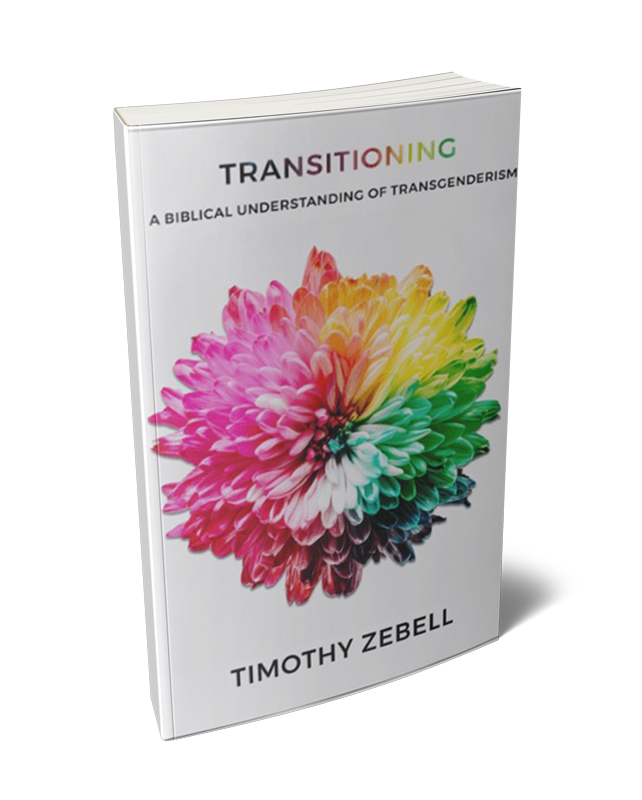234 Representatives have co-sponsored a House bill dubbed “The Equality Act” requiring schools to allow men who identify as transgender women to compete on female sports teams. This “Equality Act would amend the Civil Rights Act of 1964 to make ‘sexual orientation and gender identity’ protected characteristics under federal anti-discrimination law.”[1] In short, it would codify in law the notion that gender and biological sex are distinct and merely social constructions. But are they truly?
Although transgenderism has long sought refuge amid the acronym LGBT, standing for lesbian, gay, bi-sexual, and transgender, the transgender community increasingly argues for a distinction between biological sex, sexual preference, and gender. According to a Time magazine article titled “The Transgender Tipping Point”, “[S]ex is biological, determined by a baby’s birth anatomy; gender is cultural, a set of behaviors learned through human interaction. … Sexual preferences, meanwhile, are a separate matter altogether. There is no concrete correlation between a person’s gender identity and sexual interests; a heterosexual woman, for instance, might start living as a man and still be attracted to men. One oft-cited explanation is that sexual orientation determines who you want to go to bed with and gender identity determines what you want to go to bed as.”[2] However, this idea that gender is a social construction independent of one’s biological sex is not limited to the transgender community. According to the World Health Organization’s genomic resource centre:
Sex and gender are both important determinants of health. Biological sex and socially-constructed gender interact to produce differential risks and vulnerability to ill health, and differences in health-seeking behaviour and health outcomes for women and men. (1) “Gender” describes those characteristics of women and men that are largely socially created, while “sex” encompasses those that are biologically determined. However, these terms are often mistakenly used interchangeably in scientific literature, health policy, and legislation.[3]
Objective standards for determining and defining gender have been largely abandoned. Instead, gender is now widely believed to be a fluid concept that is shaped by one’s culture and social environment. Some even go so far as to claim that biological sex is also a social construction.[4] According to The Feminist Agenda blog, “A social construction is something that doesn’t exist independently in the “natural” world, but is instead an invention of society. Cultural practices and norms give rise to the existence of social constructs and govern the practices, customs, and rules concerning the way we use/view/understand them. In other words, we all act as if they exist, and because of our intersubjective agreement, they do.”[5]
In 2014, Facebook users were given the opportunity to select one of 50 gender options when creating their profile.[6] A few months later, Facebook worked with United Kingdom activist groups Press for Change and Gendered Intelligence to add 21 new gender options to this list.[7] With the removal of objective standards for determining gender, anyone is now capable of creating a new gender label based solely upon their personal feelings and preferences at the time. This is why by January of 2016, individuals on the popular microblog Tumblr had self-identified 325 distinct genders.[8]
This ever-expanding gender continuum only exists where there is a vacuum of objective standards for determining truth. In contrast, there is a growing body of scientific literature affirming both a gender binary and universal distinctions between these human males and females. Numerous scientific studies exist, such as: “Sociosexuality from Argentina to Zimbabwe: A 48-nation study of sex, culture, and strategies of human mating,” “Gender Differences in Personalities Across Cultures: Robust and Surprising Findings,” “A Cross-Cultural Analysis of the Behavior of Women and Men: Implications for the Origins of Sex Differences,” and “Universal Sex Differences in the Desire for Sexual Variety: Tests from 52 Nations, 6 Continents, and 13 Islands.” These studies consistently report that gender distinctions fall into two categories—male and female—and they are universal distinctions rather than social constructions. According to the abstract for the paper “The Persistence of Gender Stereotypes in the Face of Changing Sex Roles”:
Prevailing explanations for gender differences rest upon the sociocultural model, which treats personality as a consequence of socialization for social roles. Though sex roles and attitudes toward them have changed dramatically in the United States over the past three decades, a review of 18 longitudinal studies of gender stereotypes and self-ratings shows stability in perceptions of sex-typed personality traits. Our study of 3600 students surveyed in six waves from 1974 to 1991 also shows stability and even a slight increase in sex typing. This accumulating evidence is inconsistent with the sociocultural explanation. It is more consistent with the currently emerging sociobiological research that holds gender differences reflect innate differences between the sexes resulting from their different reproductive strategies. We conclude that valid social psychological explanations for gendered personality traits cannot rest upon sociocultural models alone but must include interaction of this unchanging genetic underlay with changeable social structures and processes.[9]
In their book Brain Sex: The Real Difference Between Men and Women, Anne Moir and David Jessell write, “There has seldom been a greater divide between what intelligent, enlightened opinion presumes – that men and women have the same brain – and what science knows – that they do not.”[10] They also write, “It is time to cease the vain contention that men and women [from a biological sense] are created the same. They were not and no amount of idealism or Utopian fantasy can alter that fact. … The truth is that virtually every professional scientist … has concluded that the brains of men and women are different.”[11] In keeping with this assessment, Simon Baron-Cohen concludes in his book The Essential Difference, “The female brain is predominantly hard-wired for empathy. The male brain is predominantly hard-wired for understanding and building systems.”[12] Nevertheless, the idea of a gender spectrum has been embraced by societies and countries around the world. This is the natural byproduct of a culture that has embraced the post-modern rejection of universal truth, choosing to believe that we are nothing more than a cosmic accident. However, we as Christians stand apart from our culture in that we accept the Bible to be God’s unchanging standard for truth and the foundation for our purpose in life. What then does the Bible have to say regarding gender and biological sex?
Similar to the scientific studies, the Bible does not distinguish between one’s biological sex and one’s gender. Instead, these are inextricably linked together. Genesis 1:27 teaches, “So God created man in his own image, in the image of God he created him; male and female he created them.” The Hebrew word translated as “man” is adam and means “humanity,” or “mankind.”[13] Thus, Genesis 1:27 reveals that God made mankind in His own image, and mankind was created as consisting of two categories—male and female.
“Male” in Genesis 1:27 is the Hebrew word zakar which, according to The Complete Word Study Dictionary, is “A masculine noun indicating a man, male, human. It indicates a person as male as opposed to female (Gen. 1:27; Lev. 18:22). … In its collective and plural forms, it denotes men (Ex. 13:12; Judg. 21:11; 1 Kgs. 11:15).”[14] Likewise, “female” is the Hebrew word neqebah which is simply “A feminine noun meaning female.”[15] According to Genesis 1:27, God created mankind, and these human beings are subdivided into two distinct categories—male and female.
It is conceivable that one could claim Genesis 1:27 is speaking only of biological sex, if taken in isolation; however, this creative act of God is expounded upon in Genesis 2:18–23:
Then the LORD God said, “It is not good that the man should be alone; I will make him a helper fit for him.” Now out of the ground the LORD God had formed every beast of the field and every bird of the heavens and brought them to the man to see what he would call them. And whatever the man called every living creature, that was its name. The man gave names to all livestock and to the birds of the heavens and to every beast of the field. But for Adam there was not found a helper fit for him. So the LORD God caused a deep sleep to fall upon the man, and while he slept took one of his ribs and closed up its place with flesh. And the rib that the LORD God had taken from the man he made into a woman and brought her to the man. Then the man said, “This at last is bone of my bones and flesh of my flesh; she shall be called Woman, because she was taken out of Man.”
The reason God created a second category of human being was not simply for sexual purposes—meaning for pleasure and reproduction. Instead, God sought to create someone who could help Adam in accomplishing his divine mandate. In English, this word neged is often translated as a “fit,” “meet,” or “suitable,” helper, but it means “counterpart,” or “one who corresponds to but is opposite from.”[16] In other words, God determined to make a helper for Adam who corresponded with Adam—one who was a human being—but who was also opposite from Adam—one who did not have the same tendencies, strengths, or physical features as Adam. To accomplish this, God removed a piece of Adam’s sacred architecture (something we will examine in another chapter)—part of his side, or rib—and from this sacred piece, God created Adam’s counterpart. It is only after this act that the Genesis account begins to refer to Adam in terms of gender.[17] In Genesis 2:23, Adam declares himself to be an iys, a man, and his counterpart to be issah, a woman, “Then the man said, ‘This at last is bone of my bones and flesh of my flesh; she shall be called Woman, because she was taken out of Man.’”
At this point, gender is established, and new words are chosen to describe male and female. Adam names his counterpart issah which is “A feminine noun meaning woman, wife, or female.”[18] She is not merely a biologically distinct individual, a female, she is also his counterpart—a woman and, for Adam, a wife. Likewise, Adam names himself iys which means “a man, to be strong, firm.”[19] Inherent in these titles is the individual’s biological sex. However, these titles encompass far more than merely one’s biological sex—they also encompass the individual’s gender and its accompanying role.
This concept of gender as being counterparts unto each other for the purpose of accomplishing mankind’s divine mandate is pictured throughout the Bible. Men are uniquely equipped physically and emotionally to accomplish specific roles, as are women, and together the two genders can accomplish far more than they could ever hope to accomplish individually. Although the Bible presents men and women as being equal in value, the Bible never presents the two as being equal in purpose and function. The reality of distinct gender roles is perhaps most clearly portrayed in Ephesians 5:22–33 where the gender roles in marriage are presented as an illustration of the Church’s relationship with Jesus Christ.
Gender and biological sex are not social constructions. Gender, and its accompanying gender roles, exists because mankind has a unique purpose and responsibility before God. Just as God lives in relationship within the Trinity, so also God chose that mankind should image Himself by accomplishing its mission through two distinct sexes/genders living in relationship with one another. As such, God created two sexes/genders—male/man and female/woman—who are distinct from one another both physically and emotionally.
Related Paper: “Are Gender & Biological Sex Social Constructions?“
This article is largely excerpted from the book Transitioning: A Biblical Understanding of Transgenderism.
Free Downloads
Share...
1. Hasson, Peter. “234 House Democrats, Two Republicans Co-Sponsor Bill Forcing Schools to Let Male Athletes Compete on Girls’ Sports Teams.” Daily Caller, April 10, 2019. Accessed April 15, 2019. https://dailycaller.com/2019/04/10/democrats-equality-act-transgender-girls-sports/.
2. Steinmetz, Katy. “The Transgender Tipping Point: America’s Next Civil Rights Frontier.” Time magazine 183, no. 22 (June 9, 2014), 40.
3. World Health Organization. “Introduction: Genetics and Gender Mainstreaming.” Accessed May 9, 2016. http://www.who.int/genomics/gender/en/.
4. Mey. “It’s Time for People to Stop Using the Social Construct of ‘Biological Sex’ to Defend Their Transmisogyny.” Autostraddle blog, June 5, 2014. Accessed May 25, 2016. http://www.autostraddle.com/its-time-for-people-to-stop-using-the-social-construct-of-biological-sex-to-defend-their-transmisogyny-240284/.
5. “The Social Construction of Gender.” The Feminist Agenda blog, April 22, 2009. Accessed May 9, 2016. http://thefeministagenda.blogspot.com/2009/04/social-construction-of-gender.html.
6. Sparks, Matthew. “Facebook Sex Changes: Which One of 50 Genders Are You?” The Telegraph, February 14, 2014. Accessed May 10, 2016. http://www.telegraph.co.uk/technology/facebook/10637968/Facebook-sex-changes-which-one-of-50-genders-are-you.html.
7. Williams, Rhiannon. “Facebook’s 71 Gender Options Come to UK Users.” The Telegraph, June 27, 2014. Accessed May 10, 2016. http://www.telegraph.co.uk/technology/facebook/10930654/Facebooks-71-gender-options-come-to-UK-users.html.
8. STSAdmin. “Complete List of Tumblr Genders (SO FAR).” Tumblr, January 24, 2016. Accessed May 10, 2016. http://ageofshitlords.com/list-of-all-tumblr-genders-so-far/.
9. Lueptow, Lloyd, Lori Garovich and Margaret Lueptow. “The Persistence of Gender Stereotypes in the Face of Changing Gender Roles: Evidence Contrary to the Sociocultural Model.” Ethology and Sociobiology 16, no. 6 (November 1995): 509–530.
10. Anne Moir and David Jessell, Brain Sex: The Real Difference Between Men and Women (1991), 5, Source: Family Research Council. “The Scientific Objectivity and Universality of Gender Difference.” Youtube video, https://www.youtube.com/watch?v=JTzDM6XfqxE&feature=youtu.be (accessed May 30, 2016).
11. Ibid.
12. Simon Baron-Cohen, The Essential Difference (Basic Books, 2003), 1, Source: Family Research Council. “The Scientific Objectivity and Universality of Gender Difference.” Youtube video, https://www.youtube.com/watch?v=JTzDM6XfqxE&feature=youtu.be (accessed May 30, 2016).
13. Baker, Warren and Eugene Carpenter. The Complete Word Study Dictionary: Old Testament, H#121, 16. Chattanooga: AMG Publishers, 2003.
14. Ibid, H#2145, 290.
15. Ibid, H#5347, 751.
16. Ibid, H#5048, 704.
17. Jim Garlow. “Robert Gagnon: The Bible & Homosexual Practice – The Old Testament – Genesis 1 & 2.” YouTube video, https://vimeo.com/68624959 (accessed June 12, 2014).
18. Baker, et al., The Complete Word Study Dictionary, H#802, 104.
19. Ibid, H#376, 46.
Unless otherwise noted, all Scripture quotations are taken from The Holy Bible, English Standard Version, copyright ©2001 by Crossway Bibles, a publishing ministry of Good News Publishers. Used by permission. All rights reserved.









